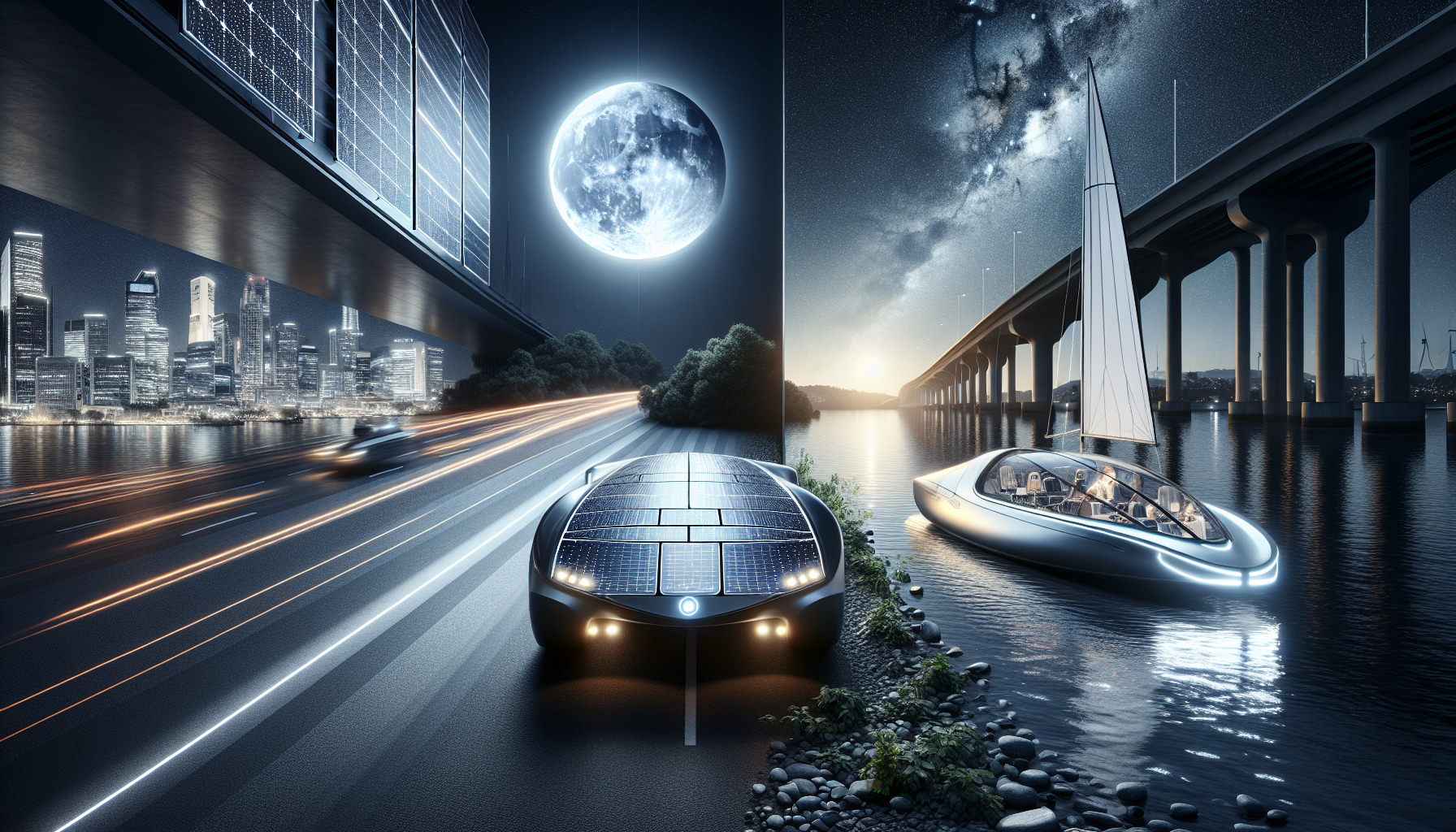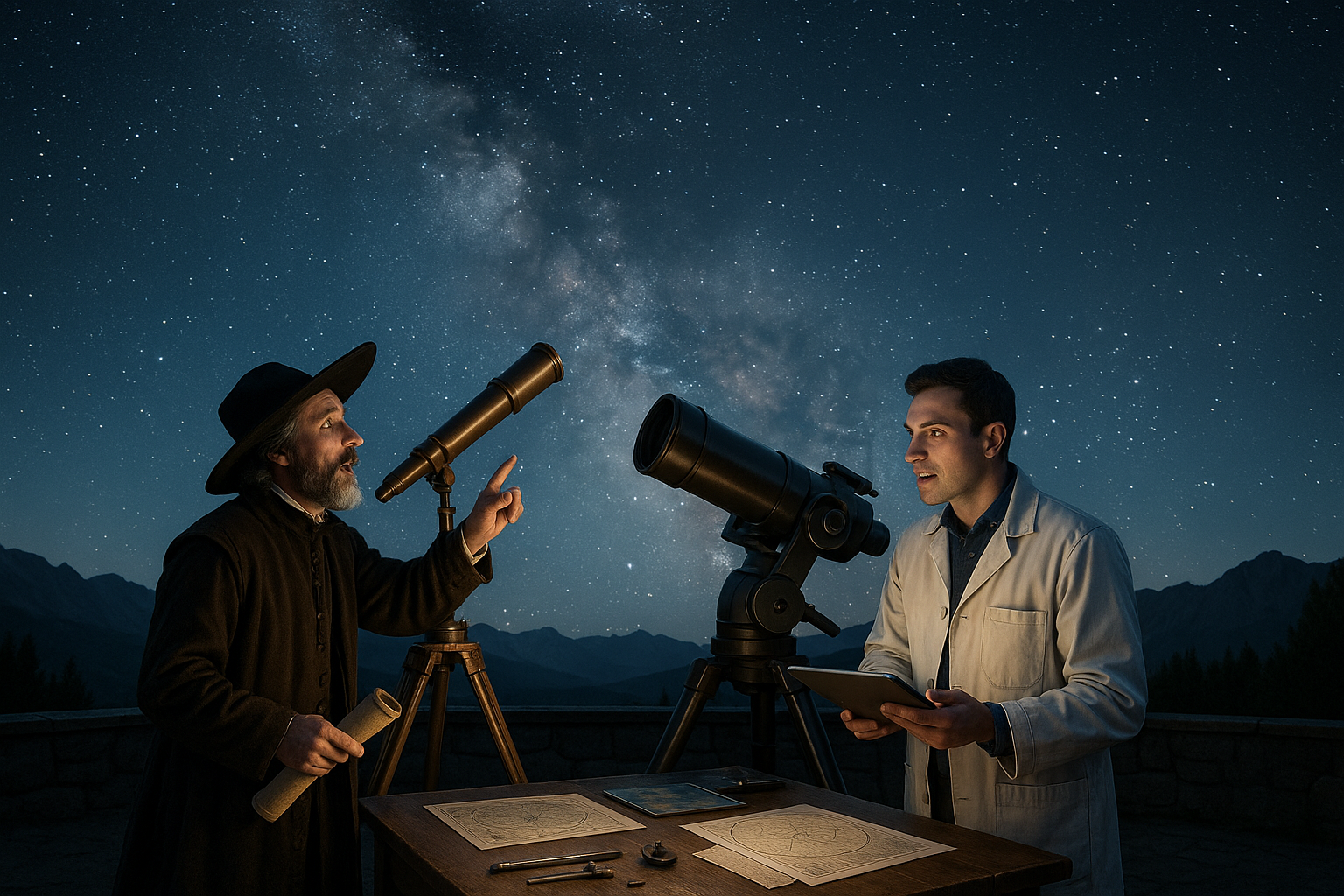In the dawn of civilization, humanity looked to the sun and moon not just as celestial bodies charting the passage of time, but as sources of inspiration and power. Ancient cultures built mythologies and technologies around these luminaries, with solar chariots and moon boats symbolizing a divine means of transport across the heavens. Fast forward to today, and we find ourselves in the midst of a technological renaissance, where these ancient symbols are becoming a modern reality. Imagine a world where our vehicles are powered by the very elements that have fascinated humankind for millennia. This is not just a dream, but an emerging reality as we begin to harness nature’s energy to revolutionize modern transportation. 🌞🌕
The quest for sustainable transportation solutions has never been more urgent. With climate change accelerating and fossil fuels becoming increasingly unsustainable, the need for green alternatives is critical. Enter solar and lunar energy – two powerful, yet largely untapped, resources that could redefine how we move from place to place. Solar energy, with its promise of endless, renewable power, has already begun to transform industries around the globe. Meanwhile, the potential of lunar energy, though still largely in its infancy, is capturing the imagination of scientists and engineers alike. But how exactly can these energies be harnessed to propel us into a new era of transportation?
In this article, we will delve deep into the transformative potential of solar chariots and moon boats, exploring the innovative technologies that are turning these ancient concepts into tangible realities. We will discuss the advancements in solar technology that are making solar-powered vehicles more efficient and accessible than ever before. From sleek solar cars cruising the highways to solar planes soaring through the skies, the future is bright with possibilities. Additionally, we will explore the nascent field of lunar energy and the intriguing prospects it holds for transportation. Could moon-derived energy power the next generation of space travel, or even terrestrial vehicles? 🚀
The Historical Context of Solar Chariots and Moon Boats
Long before the advent of modern transportation, ancient civilizations were already exploring innovative ways to harness natural forces for mobility. The concept of solar chariots and moon boats is deeply rooted in mythology and ancient technology. Solar chariots, often depicted in the art and literature of various cultures, were thought to be vehicles of the gods, powered by the sun itself. These chariots not only symbolize the power of solar energy but also highlight humanity’s long-standing fascination with the sun as a source of life and energy.
On the other hand, moon boats, often depicted in ancient mythologies, particularly in Eastern cultures, represent the serene and mystical journey through the night sky. They symbolize the use of lunar energy, offering a more tranquil and mystical counterpart to the vibrant and powerful solar chariots. These concepts have inspired generations of thinkers and inventors to imagine transportation systems that work in harmony with nature, rather than against it.
With the progression of time and technology, the symbolic representations of solar chariots and moon boats have evolved into practical applications. Today, we witness the resurgence of these ideas through solar-powered vehicles and advanced watercraft that utilize the principles of sustainable energy. These innovations are pivotal as we face global challenges such as climate change and the depletion of fossil fuels. The historical context of these ideas underscores a profound connection between ancient wisdom and modern technological advancements, setting the stage for their practical implementation in today’s world.
Modern Applications of Solar Energy in Transportation
The modern application of solar energy in transportation is a testament to humanity’s ingenuity and commitment to sustainability. Solar-powered vehicles, including cars, buses, and even aircraft, are becoming increasingly viable as technology advances. These vehicles utilize photovoltaic cells to convert sunlight into electricity, which powers electric motors. The efficiency of solar panels has improved significantly over the years, making solar-powered transportation a feasible alternative to traditional fossil fuel-powered vehicles.
One of the most notable examples of solar energy in modern transportation is the development of solar cars. Solar car races, such as the World Solar Challenge in Australia, showcase the capabilities of these vehicles. Teams from around the world compete to design and build the most efficient solar-powered car, highlighting the potential of this technology. These races not only push the boundaries of innovation but also raise awareness about the possibilities of solar energy in everyday life.
Beyond land transportation, solar energy is also making waves in the maritime industry. Solar-powered boats and ships are being developed to reduce reliance on fossil fuels and minimize environmental impact. These vessels use solar panels to generate electricity, which powers electric motors, reducing emissions and operating costs. As the technology continues to improve, we can expect to see a greater adoption of solar-powered transportation solutions, paving the way for a more sustainable future.
Comparative Analysis of Solar and Traditional Vehicles
| Aspect | Solar Vehicles | Traditional Vehicles |
|---|---|---|
| Fuel Source | Sunlight | Fossil Fuels |
| Emissions | Zero emissions | High emissions |
| Cost of Operation | Low (sunlight is free) | High (fuel costs) |
| Maintenance | Low (fewer moving parts) | High (more complex systems) |
Check out the comparative table above to better understand the differences between solar and traditional vehicles. This analysis underscores the environmental and economic benefits of adopting solar-powered transportation solutions.
Technological Innovations in Moon Boats
While solar-powered transportation has gained significant attention, the concept of moon boats offers a unique perspective on harnessing nature’s energy. Moon boats, inspired by the calm and serene energy of the moon, represent an innovative approach to waterborne transportation. These vessels are designed to utilize lunar energy, which involves capturing gravitational and tidal forces influenced by the moon’s phases.
Technological advancements in this area focus on optimizing the design of vessels to efficiently capture and utilize tidal energy. Unlike solar energy, which relies on sunlight, tidal energy is generated by the gravitational pull of the moon on the Earth’s water bodies. This renewable energy source is highly predictable and consistent, making it an attractive option for sustainable maritime transportation.
Researchers and engineers are working on developing sophisticated systems that can harness tidal energy more efficiently. These systems often involve the use of underwater turbines and advanced hydrodynamic designs to maximize energy capture. As these technologies continue to evolve, we can expect moon boats to become a viable and sustainable solution for maritime transportation, offering a harmonious blend of ancient inspiration and modern innovation.
Future Prospects and Challenges
- Integration with existing infrastructure
- Cost and efficiency improvements
- Public acceptance and adoption
The future of moon boats and other tidal energy solutions depends on overcoming several challenges. These include integrating new technologies with existing infrastructure, improving cost-effectiveness and efficiency, and gaining public acceptance. Despite these hurdles, the potential benefits of harnessing lunar energy for transportation are immense, offering a path towards a more sustainable and environmentally friendly future.
The Role of Policy and Public Support
Policy and public support play a crucial role in the adoption and development of sustainable transportation technologies. Government initiatives and incentives can significantly accelerate the research, development, and deployment of solar chariots, moon boats, and other sustainable transport solutions. Policies that promote renewable energy usage, provide subsidies for research, and offer tax incentives for green transportation options can drive innovation and adoption.
Public support is equally important, as consumer demand influences the market for sustainable transportation solutions. Educating the public about the benefits of solar and tidal energy, along with the environmental and economic advantages, can help shift consumer preferences towards greener options. Public awareness campaigns and educational programs can play a pivotal role in fostering a culture that values and supports sustainable transportation.
Moreover, collaboration between governments, private industry, and research institutions is essential to overcome technological and financial barriers. Partnerships can facilitate knowledge sharing, reduce costs, and enhance the efficiency of developing new technologies. As we move towards a future where solar chariots and moon boats are commonplace, the support and collaboration of all stakeholders will be vital in realizing this vision.
Resources and Further Exploration
To delve deeper into the exciting world of solar chariots and moon boats, check out this informative video: The Future of Solar Transportation (YouTube Channel: GreenTech). This video provides insights into the latest advancements and future prospects of solar-powered transportation solutions.
In addition to online resources, attending conferences and seminars on renewable energy and sustainable transportation can provide valuable insights and networking opportunities. Engaging with experts and industry leaders can further enhance understanding and inspire action towards adopting these innovative technologies.

Conclusion
Unleashing the potential of solar chariots and moon boats represents a pivotal stride in our quest for sustainable transportation solutions. This article has explored the innovative fusion of ancient wisdom and modern technology to harness natural energies effectively, offering a beacon of hope in addressing pressing environmental concerns.
Throughout our discussion, we’ve delved into the fascinating concept of solar chariots—vehicles powered by the sun’s abundant energy, capturing its rays through advanced photovoltaic cells. These chariots embody a commitment to reducing carbon footprints and moving towards a cleaner future. By integrating cutting-edge materials and design, they not only enhance efficiency but also symbolize a paradigm shift in how we perceive energy consumption in transportation.
Moreover, the moon boats concept underscores the untapped potential of lunar gravitational forces, an avant-garde approach to tidal energy. By utilizing the moon’s consistent gravitational pull, these boats could revolutionize maritime travel, providing an eco-friendly alternative to fossil fuel-dependent ships. The strategic use of tidal energy emphasizes the boundless opportunities in renewable energy sources, encouraging innovation that aligns with nature’s rhythms.
The implications of adopting solar chariots and moon boats are profound. They offer a sustainable pathway that can mitigate the adverse effects of climate change, decrease reliance on non-renewable resources, and inspire a new era of green engineering. The move towards these solutions not only supports environmental preservation but also stimulates economic growth by fostering new industries and job opportunities in the renewable energy sector.
As we’ve seen, the benefits extend beyond environmental impact; they resonate with economic and social dimensions as well. Investment in these technologies can drive economic transformation, stimulate research and development, and promote energy independence. It is crucial that governments, businesses, and individuals collaborate to create a supportive ecosystem that encourages the adoption and integration of these technologies into our daily lives.
In light of these insights, the importance of shifting our transportation paradigms cannot be overstated. Embracing solar chariots and moon boats is more than a technological endeavor; it’s a commitment to a sustainable future. It challenges us to rethink our relationship with energy and inspires us to harness the full potential of the natural world around us.
We encourage you, dear reader, to reflect on the possibilities that these innovations present. Imagine a world where our journeys are powered by the sun and the moon, where our transportation systems coexist harmoniously with the environment. Consider how you can contribute to this transformative movement, whether through advocacy, investment, or simply by staying informed and engaged.
Share your thoughts on how solar chariots and moon boats can reshape our future. Discuss these ideas with friends, colleagues, and policymakers. Your voice is vital in driving the change we need. By working together, we can unleash the power of nature’s energy for modern transportation, paving the way for a cleaner, greener, and more sustainable world. 🌍
For further reading, explore articles and studies on renewable energy technologies and their applications in modern transportation from reputable sources such as the International Renewable Energy Agency (IRENA) and the World Resources Institute (WRI). IRNEA WRI
Let us embark on this journey towards sustainability with optimism and determination, embracing the innovations that hold the promise of a brighter future.
Toni Santos is a visual storyteller and cosmic interpreter whose work illuminates the ancient skywatchers and their prehistoric astronomy—the profound ways early humans observed and revered the heavens before written history. Through a visionary lens, Toni explores how the stars, planets, and celestial cycles shaped myth, ritual, and survival in cultures lost to time.
Rooted in a fascination with archaic observatories, stone alignments, and celestial symbolism, Toni’s creative journey reveals the deep human impulse to understand and harmonize with the cosmos. From lunar phases guiding planting seasons to the sacred paths of the Milky Way, each of his works embodies the awe and knowledge encoded in the night sky.
Combining artistic craftsmanship with archaeological insight, Toni’s pieces evoke the mystery and precision of prehistoric astronomers. His work does more than depict—it channels the timeless dance between earth and sky, bridging ancient wisdom with contemporary wonder.
As the visionary behind Vizovex, Toni shares curated visuals, essays, and symbolic studies that invite others to reconnect with the cosmic heritage written in stone and starlight. His creations are a call to look upward, to listen to the silent stories told by the stars, and to honor the first astronomers who mapped the heavens with reverence and ingenuity.
His work is a tribute to:
The celestial wisdom of prehistoric peoples
The sacred geometry of ancient observatories
The enduring bond between human culture and the cosmos
Whether you’re a stargazer, a scholar of ancient mysteries, or someone captivated by the universe’s earliest storytellers, Toni welcomes you to journey through a space where the sky is both map and myth—one constellation, one ritual, one revelation at a time.




